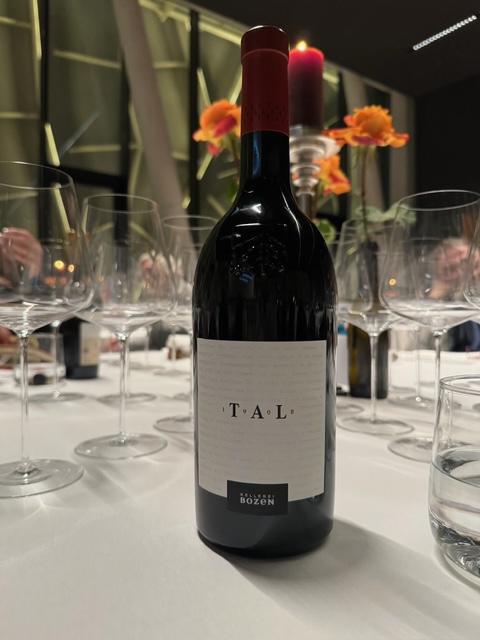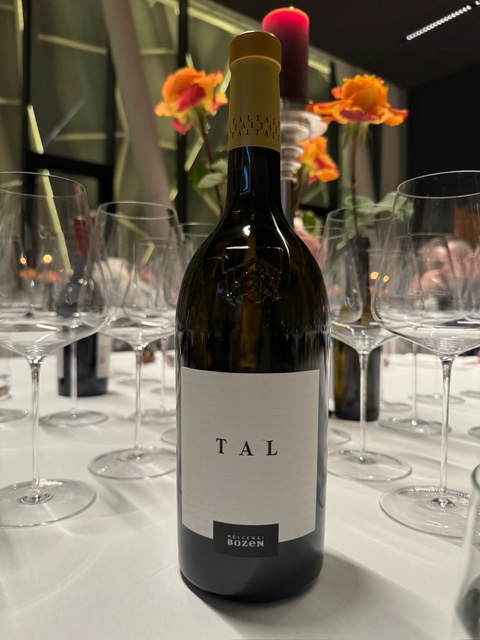This website uses cookies so that we can provide you with the best user experience possible. Cookie information is stored in your browser and performs functions such as recognising you when you return to our website and helping our team to understand which sections of the website you find most interesting and useful.
Kellerei Bozen TAL: two new icons from Alto Adige
Filippo Bartolotta explores how TAL 1908 and TAL 1930, the two new releases from Alto Adige’s Kellerei Bozen, can go toe to toe with other iconic fine wines.

TAL is the name of the two new wines from Kellerei Bozen, a red and a white which are positioned at the top of the Bolzano winery’s production. Cru vineyard, careful selection of bunches, separate vinification and reduced number of bottles (1,888 for the white and 2,999 for the red): these are the perfect ingredients to create top-level products.
The Bolzano winery, today among the most modern and one of the largest in Alto Adige, was born in 2001 from the merger of two historic wineries: Gries founded in 1908 (hence the name TAL 1908) and Santa Maddalena, dating back to 1930 (hence the name TAL 1930).
The 220 members of the Bolzano winery cultivate 350 hectares of the best vineyards, extending between 200 and 900 metres above sea level, in Bolzano Gries, S. Maddalena, S. Giustina, Coste, on the Renon and in the surrounding areas.
The new Superior line includes two cuvées. The red TAL 1908 is an 80% Lagrein, 17% Cabernet Sauvignon and 3% Merlot blend. The TAL 1930, on the other hand, is a white cuvée of 69% Chardonnay, 21% Sauvignon Blanc and 10% Pinot Grigio.
These two wines are released on the market for the first time with the 2020 vintage and are the result of incessant experimentation by winemakers and cellar masters who, with a lot of patience and passion, have transformed the best grapes into an extraordinary tasting experience.
“Since 2014 we have understood that there were some areas super suited for the production of the grapes that make up the two blends,” explained oenologist Stephan Filippi. “After many years of experiments and tastings, we are finally ready to go out on the market. This vintage saw slightly higher than average temperatures in the valley, with excellent results for red grapes. Peaks in temperature ranges were recorded on the hills which benefited the white grapes. I won’t go too far in saying that 2020 is a great vintage for the entire Alto Adige area and therefore also for Kellerei Bozen. I’m sure it will remain imprinted in the history of oenology in the area.”

The assertiveness of a long standing tradition of this winery has proved how capable they are of master the art of fine wine without giving up an inch of Alto Adige identity, even when blending with international varieties. Kellerei Bozen is a modern state of the art cellar with a very focused management team who showed pride and joy in presenting these two wines.
The presentation took place during a dinner for a select group of journalist. Blind tasted next to some other wines from the region, we could see how these brand new bottles stand alongside some iconic peers.
In the white challenge, the first wine was clearly a very intense and vibrant Burgundy which seemed at first almost like a Chablis, but then it was pretty hot and expressive despite its youth so we said southern Cote d’Or (not too far away…Saint Romain Sous le Chateau 2020 by Olivier Laflaive). The third one was a way more southern driven Chardoanny with a more buttery and alcoholic power and some oak spices…clearly a Cervaro della Sala 2020, Antinori. Of course, the middle one was the TAL 1930, with a more glycerol velvet structure, some amazingly clean tropical fruit and a distinctive Alpine mineral trait.
The red mystery tasting got us to spot without any traces of a doubt a beautiful Sangiovese from a cooler site in Chianti Classico for its bright and transparent colour, the hyper-energetic sip and the wonderful flinty cherries and violets (it was a Montevertine Pergole Torte 2020, so a 100% Sangiovese from the Chianti Classico region). The second one was clearly the TAL1908, 2020 Kellerei Bozen, with its unmistakable blueberries, blue flowers and spicy/balsamic, and voluminous Lagrain presence. This is going to be a future Alto Adige icon within the Lagrain world. We loved the Cabernet Sauvignon presence, which adds backbone, tension and longevity. The last one was easy to place as a very young classy extremely elegant Bordeaux, maybe a Saint Émilion from a super clay soil and very Cab influenced or a great Pauillac with a good Merlot presence (it was the latter, Chateau Lynch-Bages Pauillac 2020).
The name TAL means: Tradition, Authenticity, Longevity. These are the words required to understand these great wines.
TAL 1908 comes from 50 years old vines, grown in the best sites of Gries and San Maurizio, on alluvial soils on porphyritic subsoil, adjacent to the Talvera river. This river has always been fundamental for the agricultural activities of the area, which is also why Bolzano is also called the city of Talvera. Today, winemakers enjoy the ancient floods of the river as fertility generators. The 12 month maturation takes place in small oak barrels and French barriques. The wines are fined for 15 months in cement barrels prior to the final bottle ageing.
TAL 1930 is produced from vines over 30 years old, grown in the best sites on the porphyry slopes from Bolzano to Renon, between 400 and 700 meters above sea level. Here too, healthy grapes and rigorous sorting are the watchwords. Maturation is 12 months in small oak barrels and French barriques. Then it spends 14 months in steel tanks before the final bottle ageing to smooth everything out.
The new headquarters of Kellerei Bozen, inaugurated in 2018, has certainly given a decisive turning point to the development of the Superior line. Advanced technology and a cellar engineering aimed to achieve not only high quality wines but also sustainability, both in the architectural design and in the way the grapes are processed. The winery was one of the first South Tyrolean wineries to receive the prestigious sustainability certificate from Ökoinstitut Alto Adige.
I cannot wait to see how these two new wines will evolve with age, and how will they perform back to back with some other Alto Adige icons.
Related reading:
Andriano and Terlan: taking Alto Adige’s white wines to new heights

